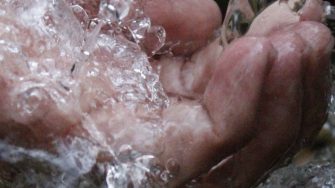
A sustainable solution to secure water supplies
As the worldÔÇÖs population continues to increase╠řand the effects of climate change become more severe, stress on existing natural╠řwater supplies╠řwill escalate.╠řWhilst water covers most of╠řEarthÔÇÖs surface, not╠řall╠řthe water available is fresh or drinkable. There are many parts of the world currently experiencing╠řwater shortages╠řand╠řdrought╠řconditions╠řcombined╠řwith water supplies that are unfit for human consumption.╠ř╠ř
Alternative╠řwater sources╠řare needed╠řto ensure╠řwater quality╠řfor╠řcommunities, industry╠řand agriculture╠řis sustainable.╠řWater treatment╠řand╠řseawater desalination╠řcan provide an alternate source of drinking╠řwater╠řby╠řreducing╠řwater╠řcontamination and╠řremoving salt and impurities╠řto produce fresh water.
Associated schools, institutes & centres
Impact
Due to energy consumption, converting sea or brackish water into potable water is more costly than obtaining fresh water from surface water, water recycling╠řor water conservation. However, these alternatives are not always available. ╠ř
We are playing a key role in protecting and increasing one of AustraliaÔÇÖs most valuable resources by developing several new treatment technologies that use renewable energy and are environmentally friendly and inexpensive, including techniques for:╠ř
- seawater desalination╠ř
- water treatment processes and wastewater sterilisation╠ř
- selective removal of heavy metals from industrial wastewater╠ř
- efficient concentration of wastewater slimes to recycle water╠ř
- the prevention of water cavitation to enable╠řmuch cheaper transport. ╠ř
Other new techniques like high-temperature reactions achieved in low-temperature water and low energy desalination are also being developed.╠ř
Competitive advantage╠ř
We've developed several new water technologies based on improved desalination processes and efficient wastewater treatment processes. We have also produced several international Patent Cooperation Treaty applications and submitted several provisional patent applications, which have╠řled to the establishment of a new local company: ÔÇśBreakthrough Water TechnologiesÔÇÖ.
We've also produced many international journal articles. During this time Professor Barry Ninham AO FAA, who works closely with our group, was awarded the Academy of SciencesÔÇÖ 2017 Matthew Flinders Medal.╠ř╠ř
Our researchers
-
- ╠ř
- ╠ř
-
R. Wei, R. M. Pashley,╠řÔÇś.ÔÇÖ╠řDesalination╠ř479, 114329 (2020).
M.╠řTaseidifar, A. G. Sanchis, R. M. Pashley and B.W. Ninham,╠řÔÇś.ÔÇÖ,╠řSubstantia╠ř3(2), 11-17 (2019).
M.╠řTaseidifar, M.╠řZiaee, R. M. Pashley and B.W. Ninham,╠řÔÇś.ÔÇÖ,╠řJ. Environ. Chem. Eng. 7, 103263, (2019).
A. Garrido, R.M. Pashley and B.W. Ninham,╠řÔÇś.ÔÇÖ╠ř,╠řNPJ Clean Water╠ř(2:5, 2019).
F.╠řMakavipour, R.M. Pashley and A.F.M.╠řMokhlesur╠řRahman,╠řÔÇś.ÔÇÖ,╠řGlobal Challenges.╠ř3(3), 1-8 (2019).
R.M.╠řPashley, J.╠řJ. Antony and M.╠řTaseidifar,╠řÔÇśThe prevention of fluid cavitationÔÇÖ,╠řPCT application Published 25 October 2018, WO 2018/191790 A1.
F.╠řMakavipour, M.╠řTaseidifar, R.M Pashley and Rahman A.F. M.╠řMohklesur.,╠ř.ÔÇÖ PCT/AU2017/051145.
R.M. Pashley, A. S. Garrido and B.W. Ninham,╠řÔÇśSterilization methodÔÇÖ,╠řPCT: Published: WO 2019/104383 A1.╠ř6 June 2019.
R.M. Pashley, M.╠řTaseidifar╠řand T.╠řGettongsong,╠řÔÇśResin for╠řDesalination╠řand Process of RegenerationÔÇÖ,╠řPCT: WO 2020/118371 A1. 18 June 2020.
-
- Heavy metal ion removal from mining wastewater╠ř
- Improved ion-exchange desalination technology ╠ř
- Novel de-watering process for mining wastewater slime treatment╠ř
- Propeller cavitation prevention╠ř
- Developing building coatings for protection against bushfire ember attack╠ř
- Hot CO2 bubbling for water sterilisation╠ř
- Novel solar array for high-temperature processes
╠ř
-
We have several new technologies that are expected to have widespread applications for both community and industrial development in Australia and overseas including:╠ř
- propeller cavitation prevention
- copper ion removal from mining wastewater, funded by Newcrest Mining
- carbon dioxide (CO2) industrial wastewater sterilisation applied to piggeries funded by Australia Pork Ltd.╠ř
- fire suppressant coatings - using solar energy to produce carbon fibres and a new coating to prevent ember attack during bushfires
- improved seawater desalination processes aimed at improving energy efficiency.╠ř
We have successfully extended the hot air bubble process to a range of other gases, which are shown to offer a range of different properties. For example, CO2 can sterilise solutes (even viruses) even at low temperatures. Hot oxygen (O2) bubbles can oxidise solutes and can kill bacterial cells. We have also discovered hot helium (He) bubbles can reduce the hydrogen (H) bonding in seawater, enhancing vaporisation.╠ř╠ř

